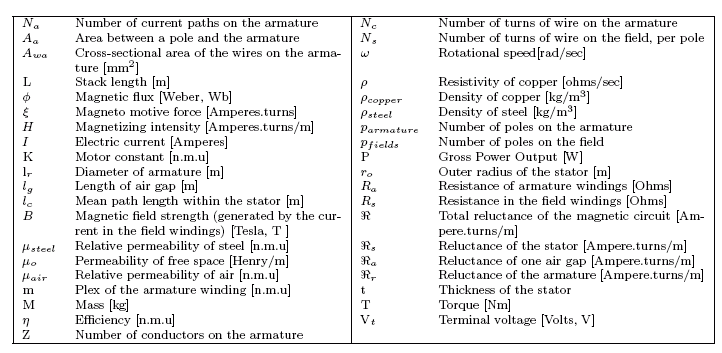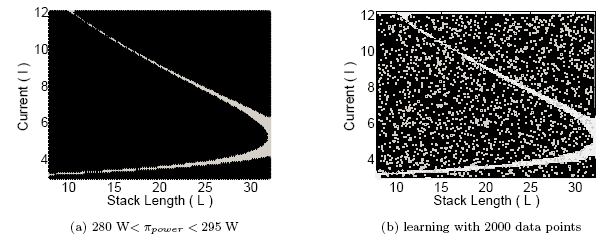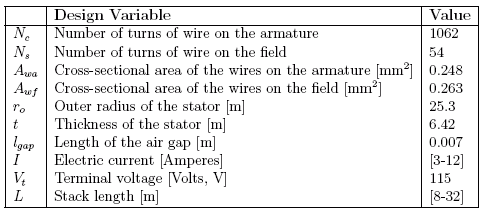Symbol Emergence via Dimensionality Reduction: Universal Motor
We investigate how dimensionality reduction techniques result in discovery of
"chunks" that encode functionally relevant patterns in the design parameter
space.
Universal Motor: Stack Length and Motor Current "chunk"
The universal motor is an AC motor where the rotor windings are in series
with the stator; it can be run on DC or AC power. It is used in the Black
and Decker line of power tools, where a standardized line of motors varying
in a single parameter, stack-length in a 2:1 range, generates a power
variation of 10:1. This revolutionary design, all variants of which could be
manufactured on the same machines, was the combined effort of the
manufacturing and design groups, and resulted in Black and Decker domination
of the power tool market since the 1980s. It also permitted flexible
introduction and termination of new designs, since little special-purpose
equipment was needed. The design has been widely investigated in the design
community [Lehnerd 1987, Simpson 98].
In the typical universal motor design, one encounters upward of ten design
parameters. Some of these such as motor current, can be controlled at run
time. A particular behaviour observed with the Universal Motor, is that for
the same stack length, two current levels result in the same power. This is
true for a range of desired powers. If the desired power is known, then it
corresponds to a thin band of possible solutions - thus the FFR constitutes a
1-D manifold in the 2-D reduced design space.
Constant-torque profile in current-vs-Stack-length space.
With other design variables held constant (as in the B&W line), the same
torque can be generated for a
given stack-length at two different currents.
Universal Motor Design: Equations
Universal Motor design.
More generally, the design may be thought to have ten design variables.


Universal Motor behaviour equations.
The equations defining the functional aspects - power, torque, efficiency,
mass - based on the design parameters.
Reference:
Lehnerd, A. P., 1987,
Revitalizing the Manufacture and Design of Mature Global Products, Technology and Global Industry: Companies and Nations in
the World Economy (Guile, B. R. and Brooks, H., eds.), National Academy
Press, Washington, D.C., pp. 49-64.




